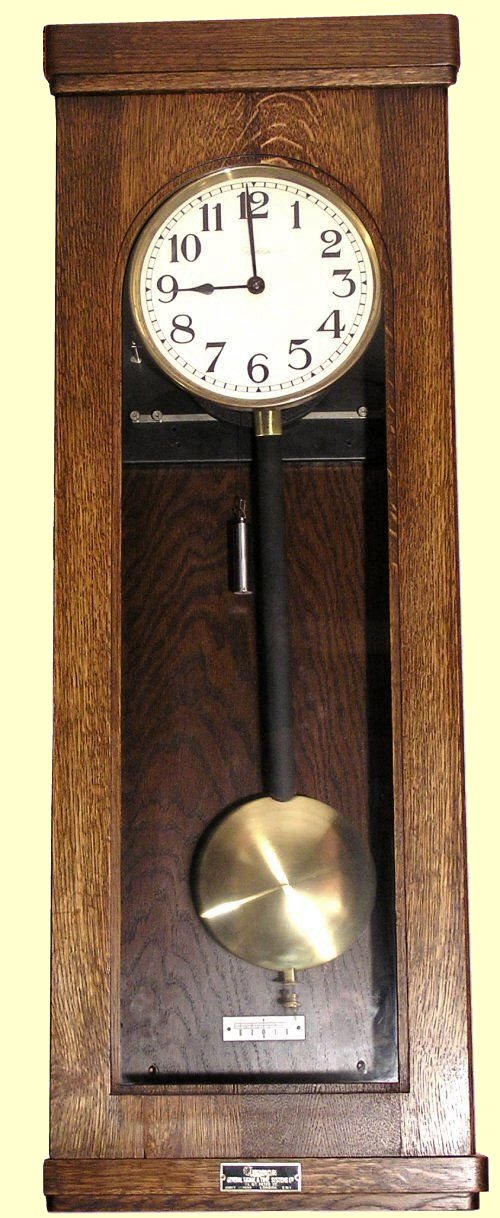Gensign often used other manufacturer's movements, Magenta being a common one, but in this instance they have used a T & N (Telefonbau & Normalzeit) movement from Germany.
The movement, like most things German, is well made and solid. It also keeps extremely good time. My own particular example comes without a second's dial, like some do, so it is difficult to be exact. But the hands of the Gensign are always spot on with my Synchronome slave dial, at each minute and half minute pulse of the Synchro, so the timekeeping seems as good as the Synchronome.
The Gensign uses a remontoire combined with a deadbeat escapement to ensure good timekeeping. The 3/4 second beat pendulum uses a wooden rod with a lenticular shaped hollow brass bob.
The remontoire takes the form of a circular flywheel at the rear of the clock. This has a cord wrapped around its periphery with a small weight hanging from the end (visible above, behind the pendulum rod) The flywheel links to the movement via a small conical spring (seen here). The spring's stored force providing a driving force during the split second period it takes to rewind the clock. Rewinding takes place by a two pole electro magnet on the top of the movement at the rear.
The sequence of operation is that on the periphery of the flywheel is a silver stud (seen here circled in red) sticking out. As the clock unwinds, the flywheel and its stud slowly turn anti clockwise, until it hits a stationary contact on the reset arm attached to the electro magnets. This then completes an electrical circuit for the magnets. When the magnets operate they flick the reset arm away. As the reset arm is still in contact with the silver stud on the flywheel, it causes the flywheel to spin around clockwise, thus rewinding the clock. The whole cycle repeats itself approximatively every 15 minutes.
The movement also has a complicated planet wheel arrangement that drives some cam work to give a 30 second pulse for the slave clocks.






